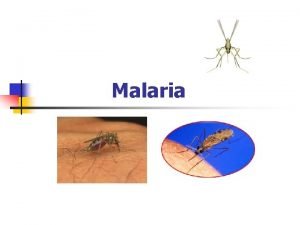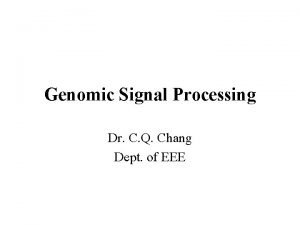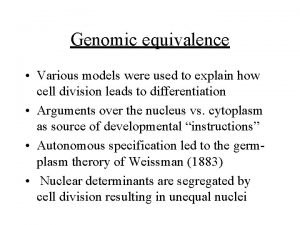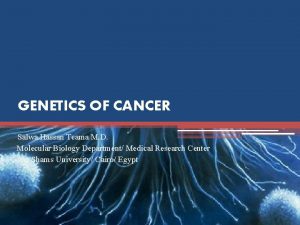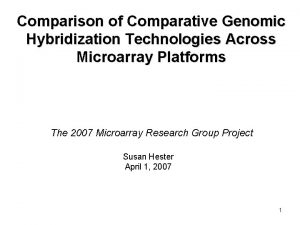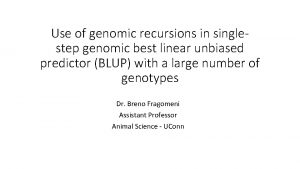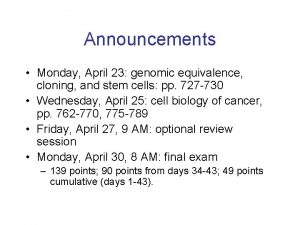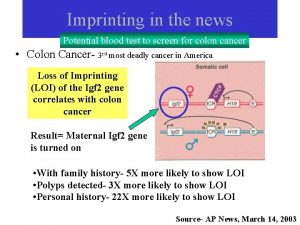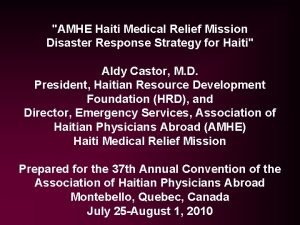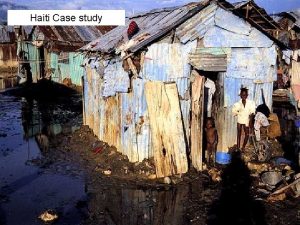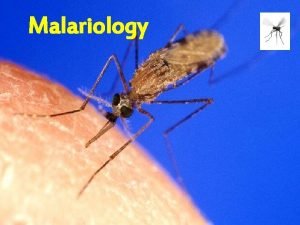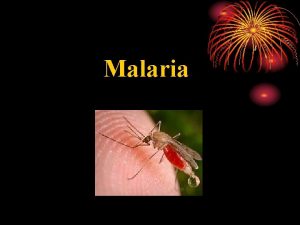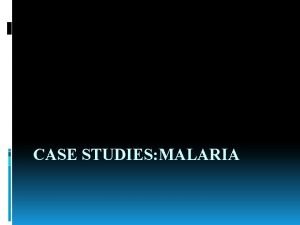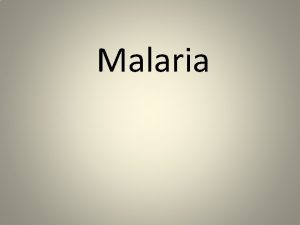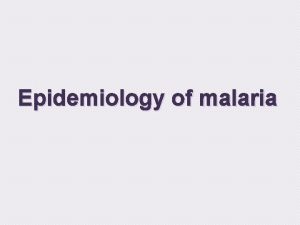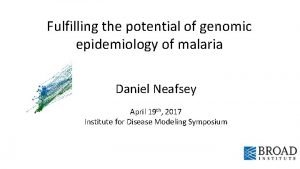Malaria in Haiti Genomic Epidemiology at the Lower













- Slides: 13

Malaria in Haiti: Genomic Epidemiology at the Lower Limits of Transmission Haiti 5 c Stamp, 1962 ©Wellcome Collection Seth Redmond Harvard TH Chan School of Public Health / Broad Institute / Monash University

Malaria elimination in Haiti is an achievable goal • Malaria elimination targeted by 2020 • Malaria burden is low: – ~20, 000 cases per year (confirmed) ~ 30, 000 suspected • Effective drugs are available: – > 99% P. falciparum – Little chloroquine resistance • Current control regime: – Passive case detection and bednet distribution – Vector: An. albimanus (predominantly bites outdoors)

Malaria elimination in Haiti is an achievable goal CHAI Elimination assessment, 2013: • Current control regime: – Cost $9 m per year • Elimination regime: – Low risk areas: test+treat – Med/High risk areas: MDA – $18 m per year (greatly reduced by targeting foci) Can genetics aid in targeting interventions? Grande Anse Sud Nippes

Can genetics help target sites for elimination? – All data generated from dried blood spots – 3 genotyping methods: 1. 24 -SNP barcode 2. 6 x Microsatellites 3. Whole Genome Sequencing SWGA, Pf 3 K only (5218 SNPs) – Overlapping datasets:

Which genetic signals can we use? Outcrossing Clonal transmission 1. Complexity of Infection 1. Clonal Proportion 2. Relatedness / IBD 3. Genetic Distance* * De Novo Mutations Resolve Disease Transmission Pathways in Clonal Malaria – Redmond et al. MBE 2018

Which genetic signals can we use? Outcrossing Clonal transmission 1. Complexity of Infection 1. Clonal Proportion 2. Relatedness / IBD 3. Genetic Distance* * De Novo Mutations Resolve Disease Transmission Pathways in Clonal Malaria – Redmond et al. MBE 2018

Haiti exhibits Low diversity, high inbreeding Unique / clonal / polygenomic proportions via barcode Barcode indicates lower diversity in Haiti than in previous applications Regions dominated by small number of clones Proportion polygenomic samples not useful as a measure of transmission

Parasite populations are structured within Haiti PCA: Sequence data Grande Anse / Sud: • Intermixed samples from two départements Nippes: • Little diversity within cluster • Nippes ‘export’ in Grande Anse Clear genetic structure indicates between-site IBD will be informative

IBD networks all show isolation of Nippes IBD networks, >25% relatedness: Nippes forms high-IBD clusters using all 3 data types Extensive IBD is seen between Grande Anse / Sud Little IBD between Nippes and other two depts

Sequencing aids resolution of partial relatedness Strong correlation between microsatellite / sequencing • 95% • Whole genome coverage maximises ability to detect non-IBD regions • Partial IBD in Nippes indicates ongoing recombination 41% 9815 - 10151 r=0. 93 9815 - 9777 9815 9777 10151 IBD blocks (via sequencing) Microsatellite alleles

Different data types can be compared via IBD • Summary statistics are comparable between data types – Proportion highly related pairs (>25% IBD) – All data types highlight inbreeding in Nippes & isolation from the other two départements

conclusions • • Grande Anse / Sud show ongoing gene flow between sites Nippes is isolated and a good candidate for local elimination • • IBD can inform us of import/export patterns between different sites Co. I may underestimate transmission rate in low-diversity settings • • Valuable information derived from low-cost genotyping Genetics are cost effective in areas without strong infrastructure

Broad Institute / Harvard TH Chan School of Public Health Programme National de Contrôle de la Malaria, Haiti CDC Kumar Venkatachalam Daniel Neafsey Sarah Volkman Jacques Boncy Michelle Chang Bronwyn Mac. Innis Rachel Daniels Baby Pierre Eric Rogier Angela Early Dyann Wirth Jean Frantz Lemoine Curtis S. Huber Tim Farrell Stella Chenet Camelia Herman Breanna Walsh Aimee Taylor Caroline Buckee April 2019 -> Institute for Vector-Borne Disease, Monash University, Melbourne seth. redmond@monash. edu https: //www. monash. edu/ivbd
